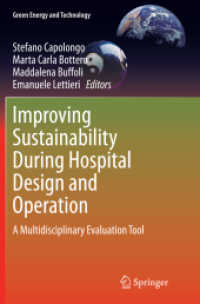Full Description
The idea of organising a colloquium on turbulence emerged during the sabbatical leave of Prof. Arkady Tsinober in Zurich. New experimental observations and the insight gained through direct numerical simulations have been stimulating research in turbulence and are leading to the developments of new concepts. The organisers felt the necessity to bring together researchers who have contributed significantly to the advances in this field in a colloquium in which the current achievements and the future development in the theoretical, numerical and experimental approaches would be discussed. The main emphasis of the colloquium was put on discussions. These discussions led to an interesting and exciting exchange of ideas, but also involved its very laborious transcription onto paper. It was due to the personal efforts of Mrs. A. Vyskocil, Dr. N. Malik and Dr. X. Studerus that this work could be completed. The colloquium was held in the relaxed atmosphere of the Centro Stefano Franscini in Monte Verita near Ascona, a locality of exceptional natural beauty, which was put at our disposal by the Swiss Federal Institute of Technology.
We would like to express our gratitude for this generous financial and logistic support, which contributed considerably to the success of the colloquium. Zurich, April 1993 Th. Dracos, A. Tsinober Participants Adrian, R. J. Kambe, T. Antonia, R. A. Kit,E. Aref, H. Landahl, M. T. Betchov, R. Lesieur, M. Bewersdorff, H. -W. Malik, N. Castaing, B. Moffatt, H. K. Chen, J. Moin,P. Dracos, T. Mullin, T. Frisch, U. Novikov, E. A.






